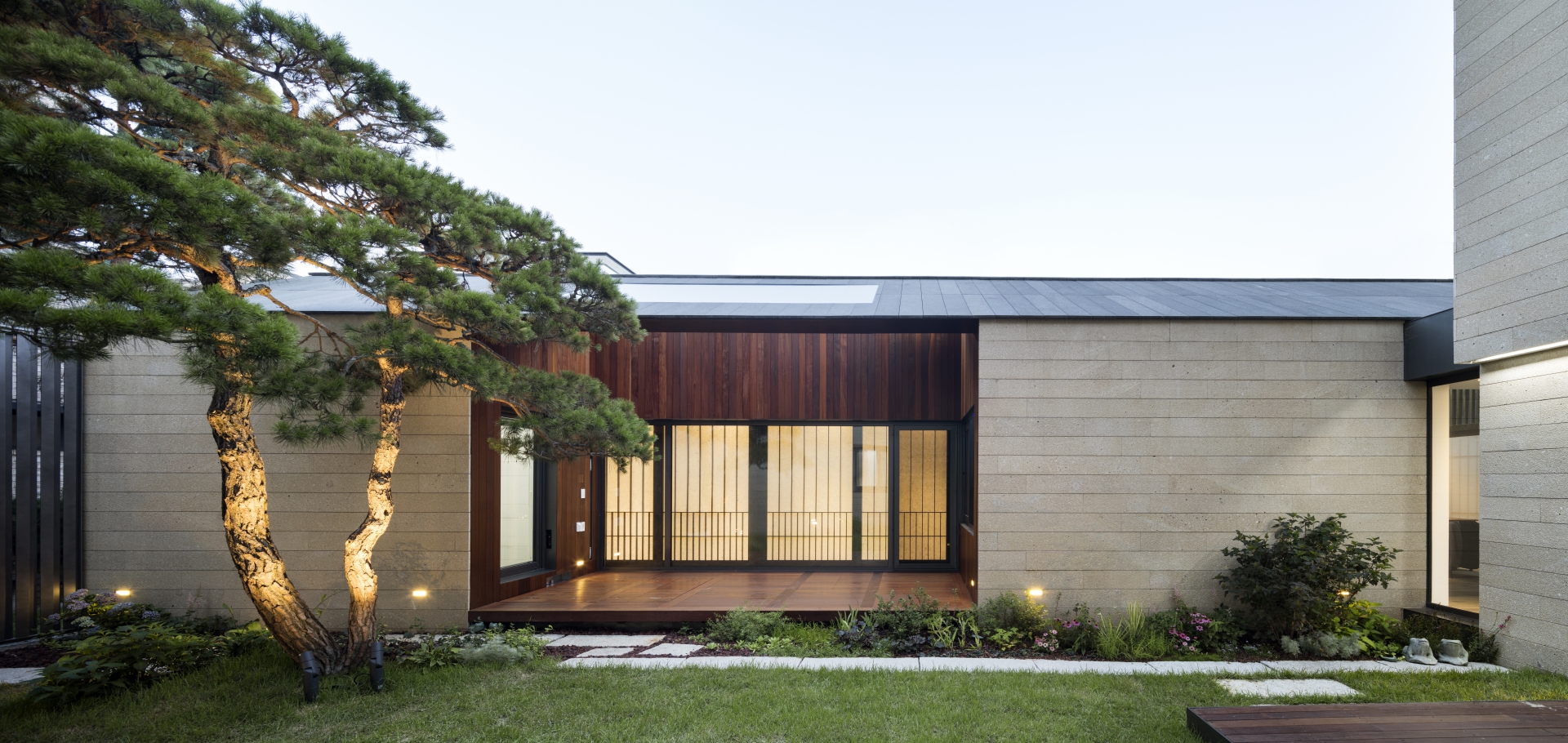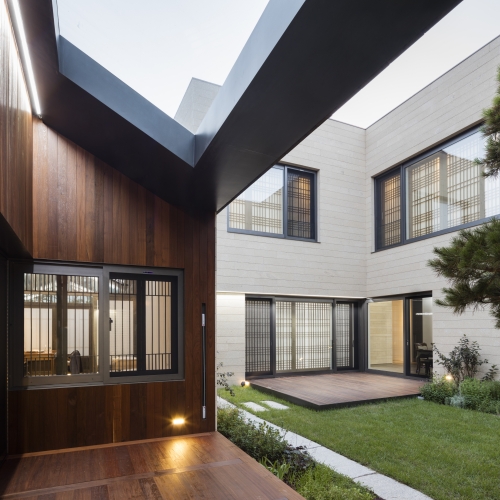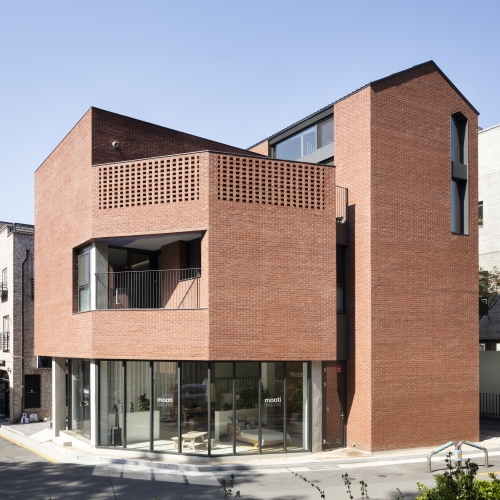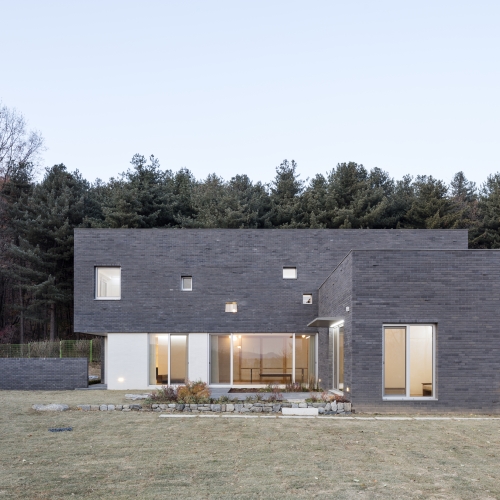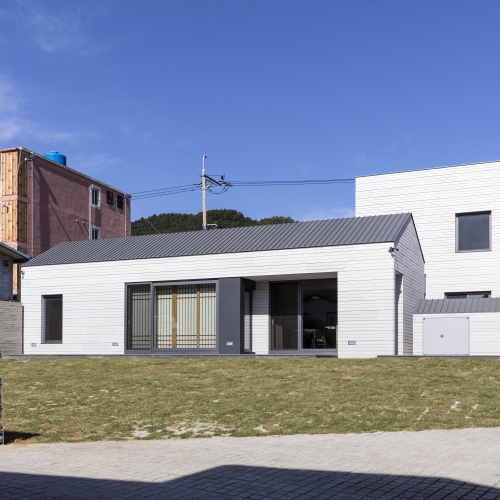As a small-scale building, the features of the land and the family are most important to a residential house in terms of planning. The location, the condition, and the surrounding environment all provide the clues as to how the building will be formed and placed, as well as to the lifestyle and the character of the family that will inhabit the building and become the contents of the house.
A Short Reflection on Home
Family is the smallest social organ, formed by blood relations. A family is an organisation that is composed of instinctual problems, desires, and emotions that lack any concern for gain and loss, and the location where such an organisation lives is a home. A home requires a public space where a family can gather together to share their livelihood as well as a private individual space where one can be by oneself, but currently it is only geared towards its customary role of having a room, a living room, a kitchen, a toilet, and other rooms as their main spaces. However, more nuanced and complex content is tied up in within a home.
Home is a special place where one is allowed to relax, no longer subject to the pressures of external appearance imposed by wider society, and it is a place where one is forgiven of all minor irritations and mistakes in the name of love. The memories of childhood that continue throughout generations and reminiscences from the perspective of old age create a unique family culture, and through events that take place outside of these boundaries, a family develops a tight-knit bond that cannot be explained via reason. A home is a place people return to everyday, retreating from the outside world, and it is a location that evokes a longing and a nostalgia when the time to return has been extended for too long.
A residential house is different from a home. If a residential house is used as an architectural term to denote a residential space, a home is the physical reality that activates all five senses to see, feel, and experience the unique culture that has been formed by its members. When a residential house becomes a home, the general function of the residential house and the universal concept of a residence become transposed to an indigenous space, which holds the unique history of a family. It is as though the country, history and the regional culture belong to them.
Land and Home
Land is an important factor that decides the form of the residential building. In general, we describe a land of good properties in terms of its geography, landscape, and economic value as ‘good land’. However, does such ‘good land’ even exist in our contemporary residential environments, which are bound together in such complex relationships? Even if such land was ever to be found, the building that is built upon it does not automatically become a good home. This is because there is no absolute standard to measure good land or a good home.
The good and the bad texts that a land possesses are the history as well as the story of the land. To build a residential building on a piece of land is to lay the ground for a new life and a new beginning, as the past histories of the land and family coincide with one another. The agreement between land and family then manifests itself as a form of a home, as it shows how respective conditions that they have held on to become mediated and reconfigured through the encounter. A new relationship where the pros and cons of the land become either more emphasised or diminished, where the things that had existed before transformations reveals new things that weren’t visible before, begins with the birth of a home. The land and home do not themselves move or speak, but they become a living thing through their outlook and their will to uphold life. In that respect, the relationship between the land and home is no less thick than the bloodbonded shared by a family.
A Home Takes After its Occupants
It is said that a couple tends to resemble one another after living together for a long time. The reason why the tastes and the preferences of a family tend to be similar is not merely because of genetics but because they share a large amount of time together in the same space. After sharing a preferred sign for a long time, this repeated practice eventually becomes a familial culture, and it is inevitable that it turns into something most appropriate to the events that happen in the physical space and within. Perhaps, a residential house is the choice of those who want to experience this side of family in a more definitive way.
The 5-day work policy, enforced since 2004, along with the increase in the number of alternate holidays, seems to have become the reasons to emphasise the importance of family and home. The reasons for questioning free time and the popularization of slogans such as ‘Do X Slowly’ may be understood as an attempt to recover the meaning of a daily life that has been hidden by the rapid rate of progress in society.
Only about 10 years ago the main form of residence in our country was apartments. We have accommodated personal and distinctive lives that refuse to be classified into these apartment planes grouped under A, B, and C for the sake of efficiency. However, I wonder if the heightened interest nowadays for residences comes from the desire to pursue a feeling of indigeneity that is more affiliated with genetics and lifestyles than mere factory-made conveniences found in regular residential buildings built by property developers. If the possibility for expression in apartments was limited to removing a wall or reorganising the furniture, a house allows for a greater amount of self-expression and one’s desire for uniqueness, as one can reflect one’s own lifestyle and tastes as much as one wants from the selecting of land to the choosing of every door knob. It is similar to designing a tailor-made suit that fits one’s body perfectly.
Romance in the Bathroom
There is this movie poster that I cannot forget, although I have forgotten its title. It is a close-up image of an actress in a bubble bath holding a glass of wine while looking out into the star-filled night skyline of the Eiffel tower and over the many roofs of Paris. Perhaps the reason why when planning a house I spend the most time designing the bathroom is because I am always reminded of the feeling and the inspiration that I received from this poster. From perceiving a bathroom as a scary place during my youth to a dark corner of the apartment in which I now live, the bathroom I experienced was a small confined space with the limited functions of relieving and washing oneself. However, if I was to adopt a different perspective, I too could enjoy the sky, the wind, the stars, and poetry from my bathroom.
Fixed perspectives, lifestyles, and habits regarding residential houses obstruct our imagination for a new breed of house. A space that is either not so important or difficult to understand in terms of common sense is regarded as a dead space, and unfamiliar methods – already thought to be difficult to use – are perceived as something to avoid. However, just like the romantic movie poster, if a feeling is instilled into a bathroom to create a new inspiration for life, the worth of the impression from existence itself will not be diminished, even if it lacks importance or becomes something unfamiliar.
A home is not decided by the architect’s logic or customs, but comes about after listening to the surrounding relationships that desire to be something. To experience a home is not to feel its form but the potential emotions hidden within space. It is a continuous experience of the constantly changing faces of life, according to time and situation through space by means of the five senses, endlessly observing, listening, and touching it. Consequently, the thought of an architect hidden within space is made alive when the empty image moves, and such an image becomes richer through the feelings of those who experience it. An architect may build a house with visible materials, but the worth of a house is expressed fully when the invisible things become activated by its inhabitants. As the house key is passed onto the home-owner from the architect, this house will embark on its journey towards maturation.
A house is a small universe that accommodates human beings. The world is where I am, the world moves as I move, and I and my house are always at the centre of that world.
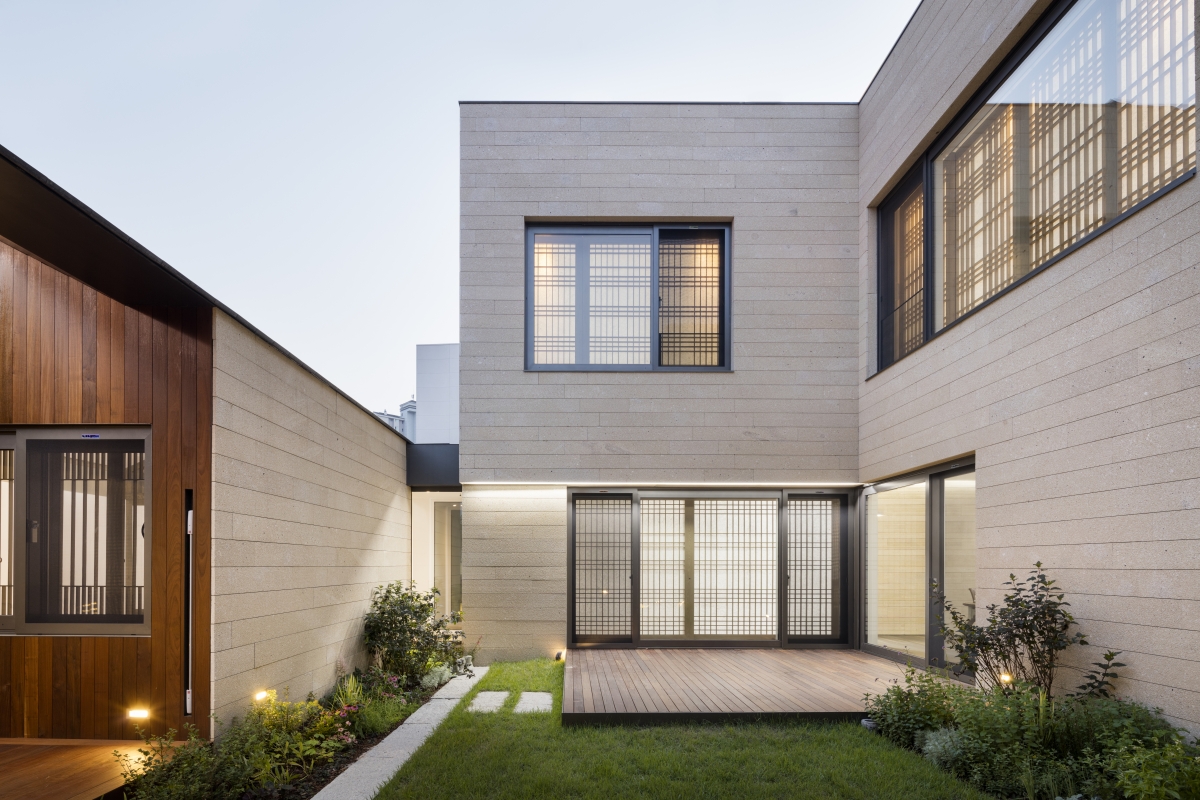
빅_마마
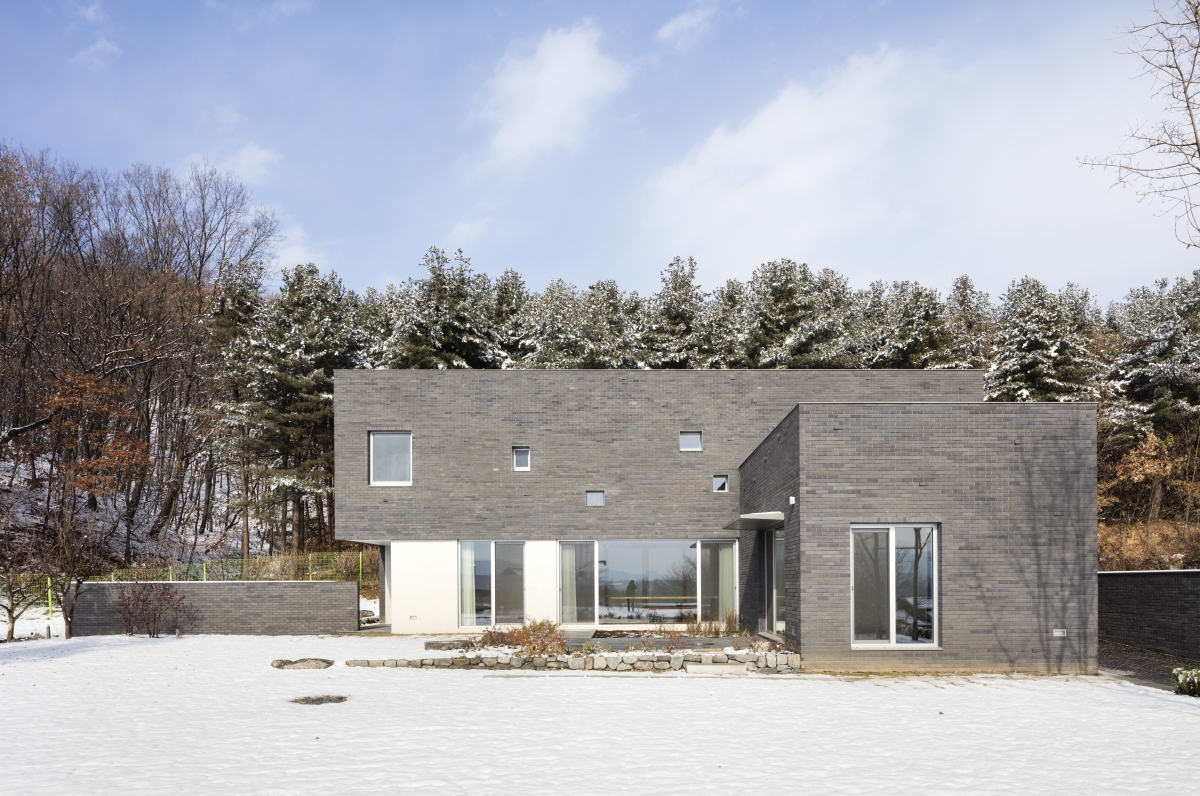
별-반
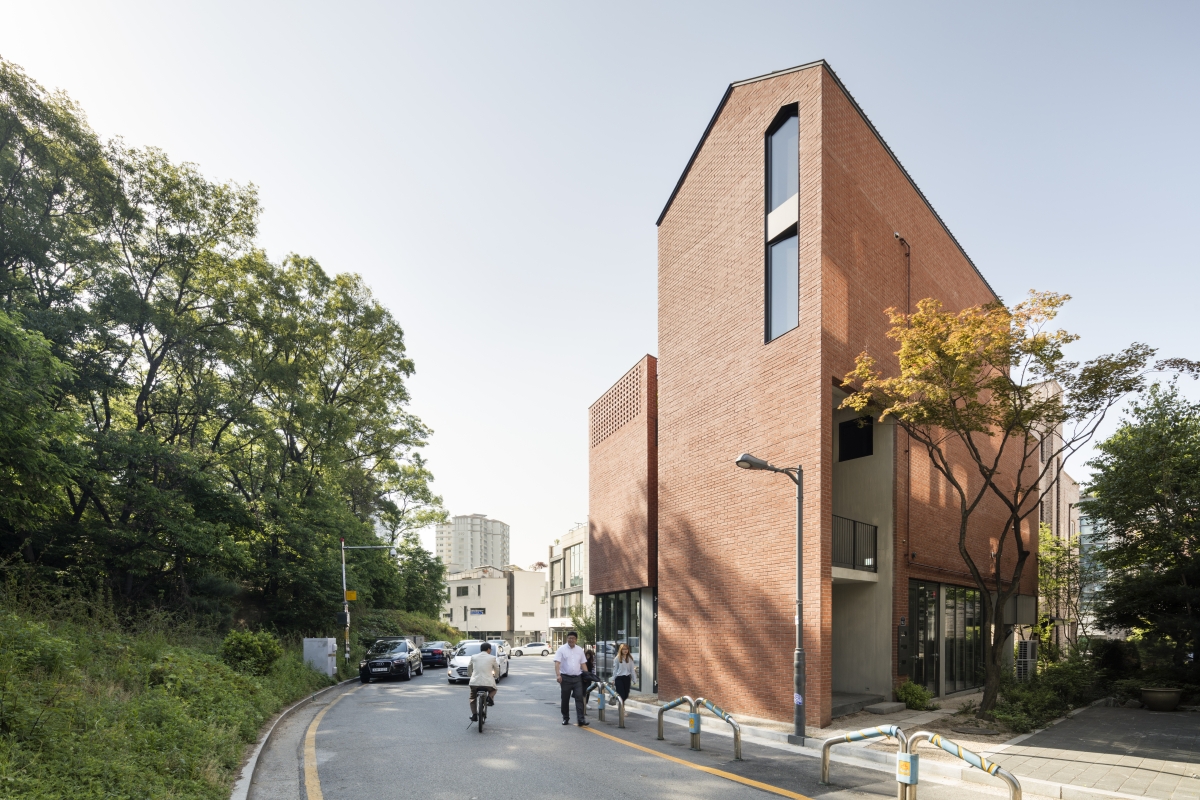
붉은 벽돌집 - 두 번째 이야기
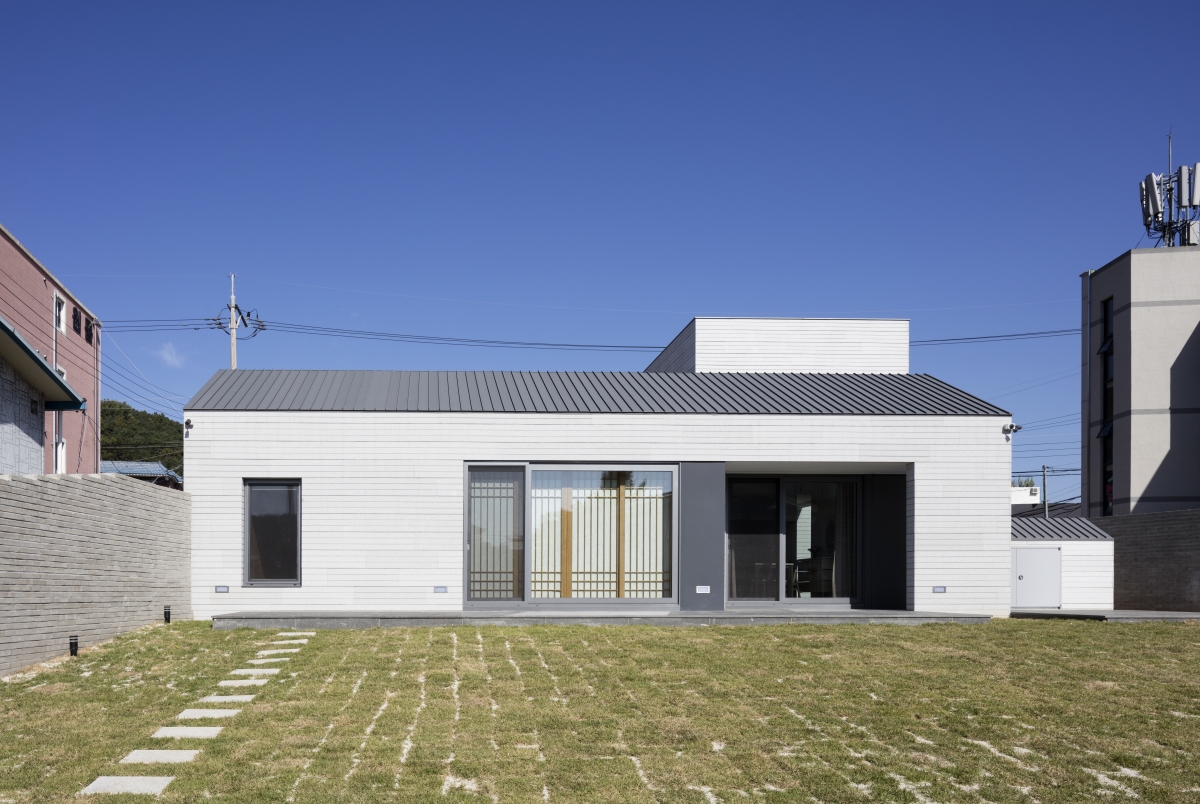
비둘기집
각 프로젝트의 대한 자세한 내용은 아래의 연관 게시물을 확인해주세요.
디자인캠프문박 디엠피 인물들의 인터뷰, 전영훈 중앙대 교수의 비평 등 보다 자세한 내용은 SPACE 2018년 1월호 지면으로 만나보실 수 있습니다.





